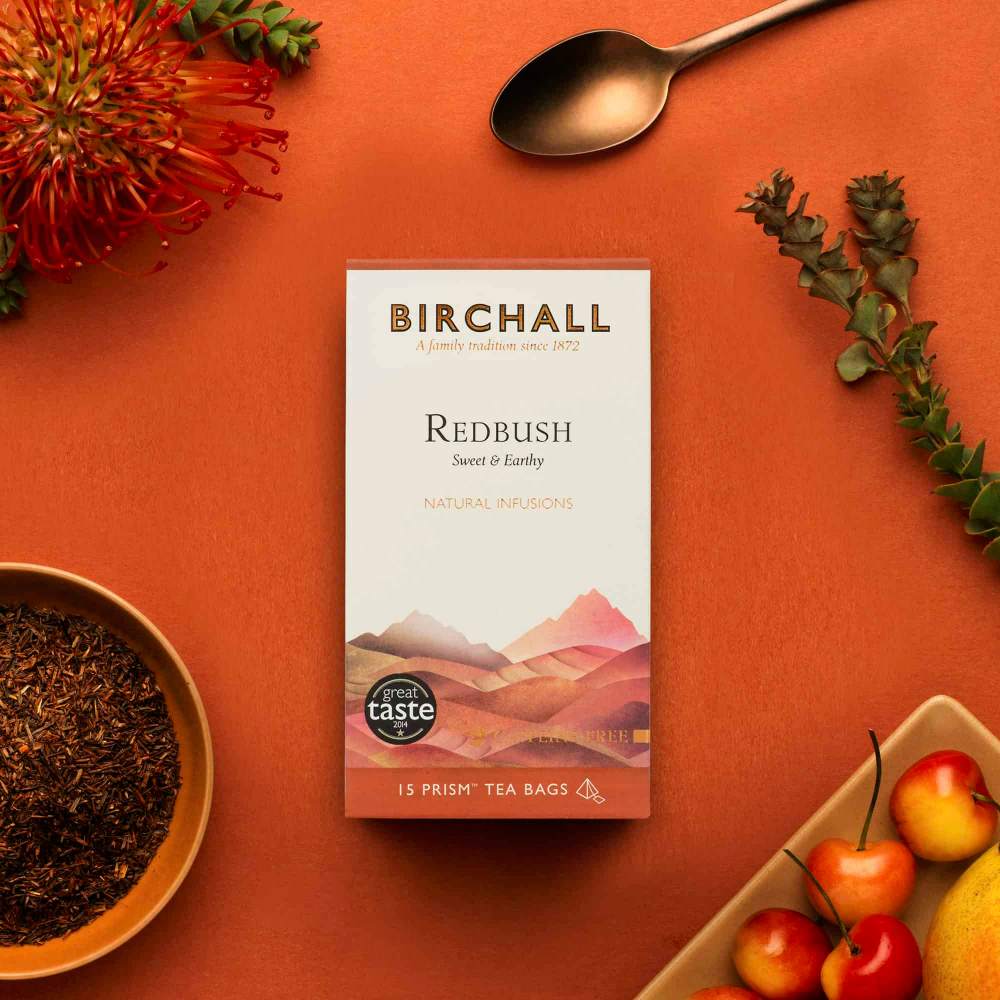What Is Rooibos Tea?
The 300-year-old rooibos (pronounced “roy-boss”) plant is just a baby compared to the 1,000-plus-year-old Camellia sinensis plant that yields what we know as black and green tea.
Rooibos is usually grown in the Cederberg, a small mountainous area in the region of the Western Cape in South Africa. Generally, the leaves undergo oxidation (often termed “fermentation” in common tea processing terminology). This process produces the distinctive reddish-brown colour of rooibos and enhances the flavour.
Unoxidised “green” rooibos is also produced, but the more demanding production process for green rooibos (similar to the method by which green tea is produced) makes it more expensive than traditional rooibos. It carries a malty and slightly grassy flavour somewhat different from its red counterpart.
So what is the Rooibos tea good for?
Rooibos tea contains antioxidants with anti-inflammatory properties that help to reduce inflammation and feelings of aches and pains. The anti-spasmodic compounds in rooibos tea help to alleviate abdominal pain such as stomach cramps by activating potassium ions throughout the body
6 Benefits Of Rooibos (Redbush) Tea:
- Caffeine-free
- Low in tannins
- Rich in antioxidants
- May help keep cholesterol levels in check
- Helps with blood sugar levels
- Rooibos tea is calorie-free
What Does Rooibos (Redbush) Tea Taste Like
With an underlying note of vanilla, rooibos has a unique, naturally sweet and earthy taste.
How Is Rooibos Tea Processed?
Rooibos is harvested and processed in a similar fashion to the Camellia sinensis tea plant. When harvested, the bushy rooibos plant is cut by hand and its stems and leaves are bound into bundles.
The bundles are sorted and then cut or bruised to encourage oxidation. Oxidation, or exposure to oxygen, is what brings out the plant’s essential oils and helps the leaves develop their rich colour and flavour. The more oxidised the rooibos, the redder in colour and sweeter and richer in flavour it becomes. This is the version we know as red rooibos (Redbush). A less oxidised rooibos is steamed and dried immediately instead of oxidised, so it remains slightly green in colour and retains a grassy, mineral-like flavour. This less oxidised version is called green rooibos.
Rooibos is also graded like tea from the Camellia sinensis plant, where the grade depends on the leaf to stem content ratio. Higher grades of rooibos contain more flavourful leaves and less stem and dust.
How to Make The Perfect Cup Of Rooibos (Redbush) Tea:
- Use freshly drawn, pure, cold filtered water.
- High grade, good quality loose leaf rooibos can typically be infused a couple of times.
- Use 2.5 grams of Birchall loose leaf Redbush per 8 oz. cup of water.
- As with black tea, infuse in just-boiled water for 3 minutes.
- Cover your rooibos while it’s infusing to keep all the heat in the steeping vessel.
- Unlike traditional black or green tea, rooibos won’t get more astringent and bitter the longer it’s infused in hot water; it will just get stronger and more flavourful so brew for longer if desired.
- Rooibos is nice on its own, but just like a traditional black tea, rooibos can be often enjoyed with milk and a little sweetener.
Do you want to try the Birchall Rooibos Tea? which has been a winner of multiple Great Taste Awards.
Save 10% with promo code GOLD10
Sources:
https://en.wikipedia.org/wiki/Rooibos
https://www.medicalnewstoday.com/articles/323637#7-potential-health-benefits



